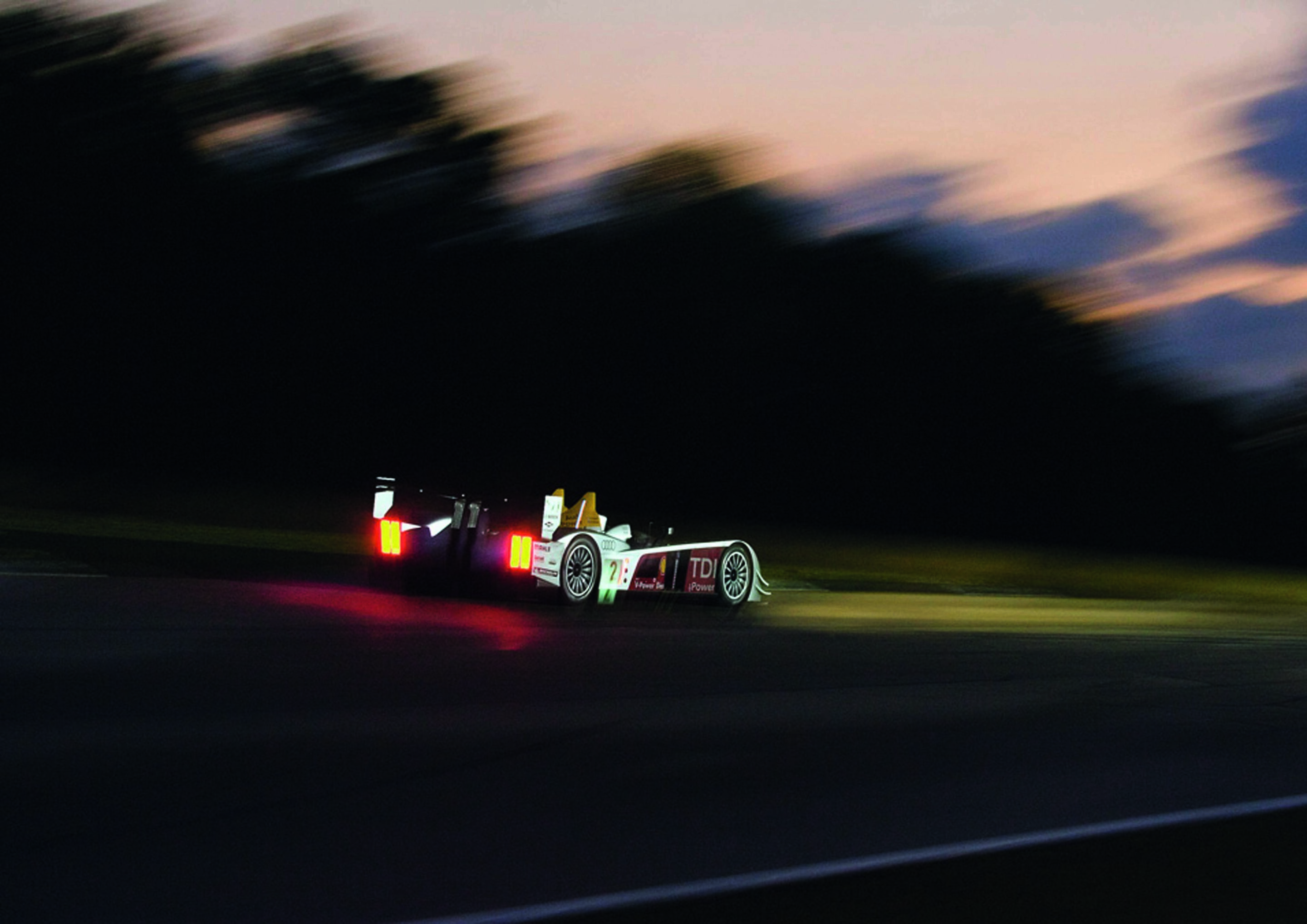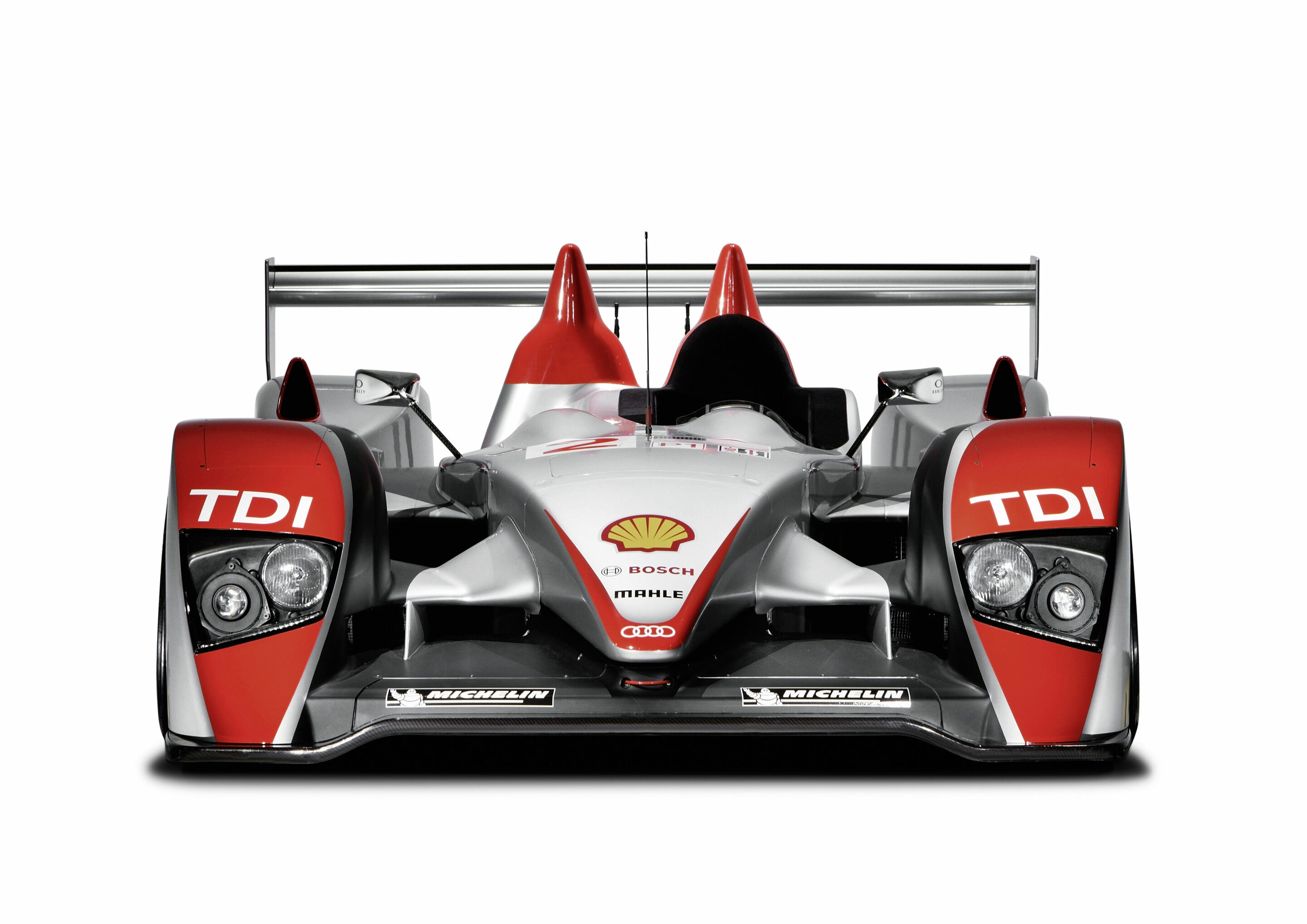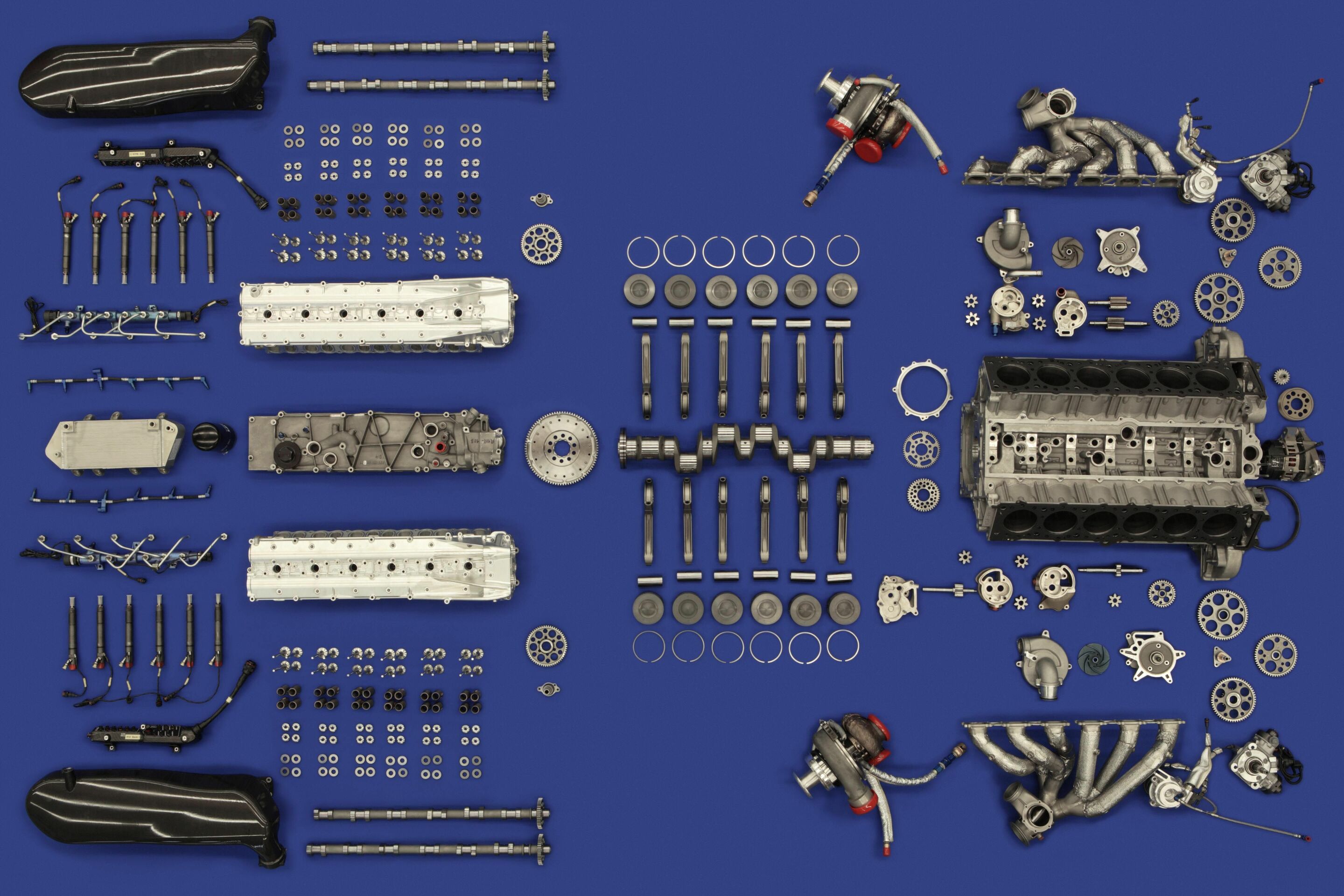Search
All search results for "r10 v12"
(52)

One concept car that never made it to series production was the R8 with a turbocharged V12 diesel engine; the R8 V12 TDI concept. Background: In the 2010s, Audi was successful at Le Mans with the R10 TDI and wanted to establish diesel technology for sports cars, which had not existed until then. With 500 PS and a maximum torque of 1,000 Nm, the concept went from zero to 100 km/h in about four seconds – with an average consumption of less than ten liters. The final evolution of the first-generation R8 was the Audi R8 LMX, a special edition released in 2014 that was limited to 99 units and – like the R8 GT a few years earlier – was inspired by racing. With 570 PS, the R8 LMX raced from zero to 100 km/h in 3.4 seconds, making it the fastest Audi production car at the time. Another unique feature was the laser high beams, which the R8 LMX was the first production car to use. A laser module in each headlight generated a light beam with twice the illumination range of full LED headlights. In eight years, Audi produced just over 26,000 units of the first R8 at the Neckarsulm plant. The Audi R8 as a movie star Thanks to its movie-star looks and Hollywood flair, the Audi R8 was featured in numerous blockbusters. The R8 made its most famous cameo as the companion of Marvel hero Tony Stark, alter ego Iron Man. In all three movies, Stark, played by Robert Downey Jr., drove a first-generation Audi R8; in the third installment, it was an electric R8 e-tron. The second-generation R8 also starred in Marvel movies, such as “Captain America: Civil War” in 2016 and “Spider-Man: Homecoming” in 2017. In the 2004 sci-fi thriller “I, Robot,” the main character, Del Spooner, played by Will Smith, drove a super sports car whose basic shape was reminiscent of the Audi R8. The futuristic sports car was an Audi RSQ Concept, designed for the movie by Audi’s design team and then Head of Design Walter De Silva.
 Audi with most fuel-efficient powertrain
at Le Mans
Audi with most fuel-efficient powertrain
at Le Mans
Compared with the 2006 5.5-liter V12 Audi R10 TDI, the first TDI engine used at Le Mans, the current race car consumes about 40 percent less fuel – while achieving comparable lap times. In concrete terms, 138.7 megajoules of fuel energy are available to the new R18 e-tron quattro per lap at Le Mans. This amounts to 6.16 liters less per 100 kilometers than the gasoline engines of the challengers, Toyota and Porsche, are allowed to consume. If the best teams, as last was the case in the 2012 season that saw only brief safety car periods, covered 378 laps, then Audi’s high-performance TDI engine would have 317.52 liters less fuel available in the course of 24 hours than the gasoline units. This results in an easily understandable comparative situation that every customer is familiar with in normal road traffic: how efficient is a diesel and how efficient a gasoline engine? The situation at Le Mans is aggravated by the sum of all ratings. A complex set of rules assesses the various technical concepts. Through energy allocations and fuel flow quantities, as well as the pit stop intervals resulting from fuel consumption and fuel tank capacity, the regulations aim to achieve an ‘equivalence of technology.’ “Audi has arguably never before faced such a difficult task at Le Mans as this year,” says Prof. Dr.-Ing. Ulrich Hackenberg, Member of the Board of Management of AUDI AG for Technical Development. “The current rating means that the efficiency advantages based on the principle of the TDI engine no longer suffice to also achieve an advantage across the racing distance. Still, we’re taking on this challenge in order to demonstrate our technological expertise. More than ever before, the perfect showing by a cohesive team will be crucial at Le Mans.” Last year’s winners Loïc Duval (F) and Tom Kristensen (DK), who is the Le Mans record holder with nine victories to his credit, are sharing the number 1 R18 e-tron quattro with Lucas di Grassi (BR).
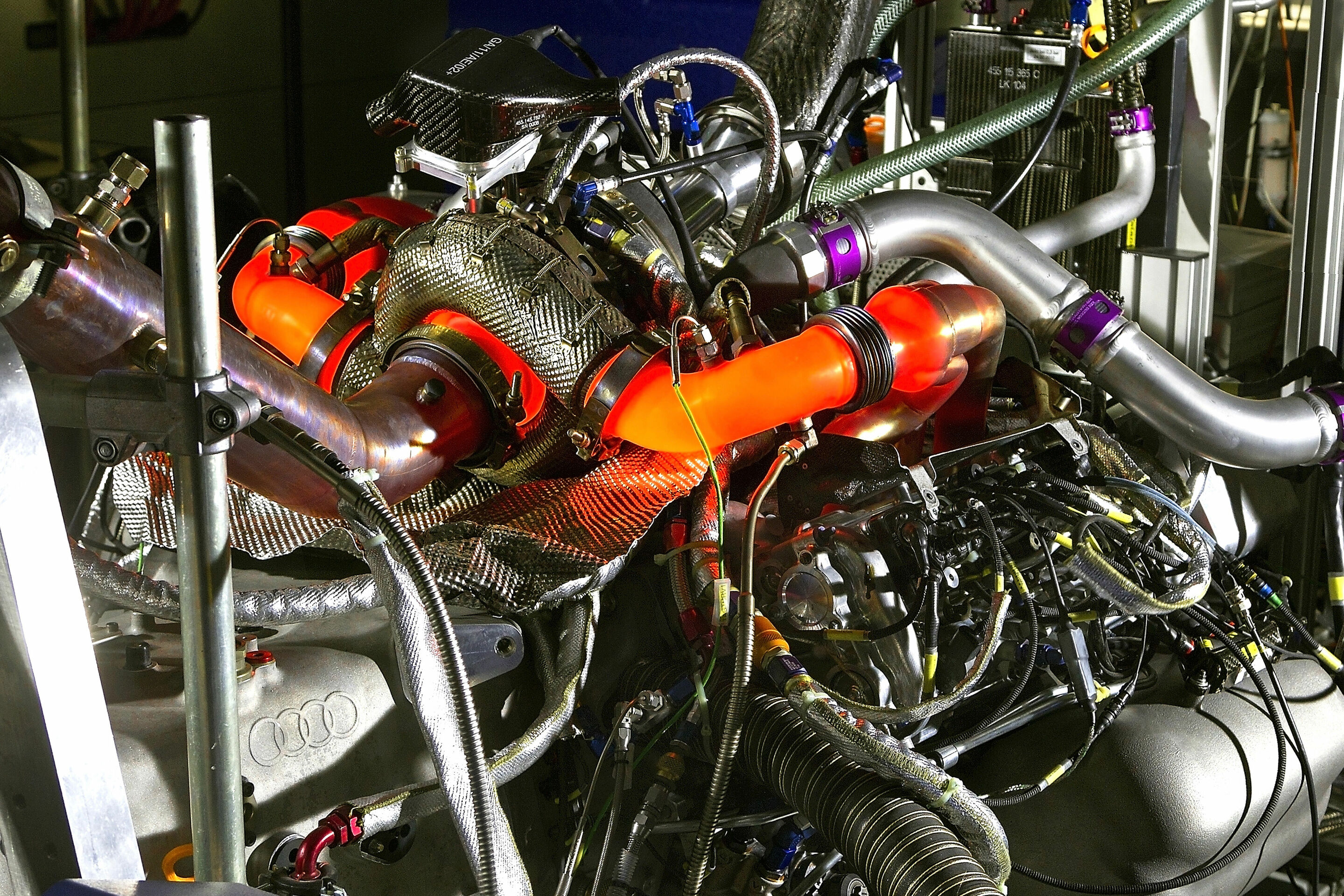 Audi at Le Mans: engine technology forges close links to production
Audi at Le Mans: engine technology forges close links to production
From 5.5 liters of displacement, the V12 engine of the Audi R10 TDI developed more than 478 kW (650 hp). Particularly impressive was its torque of over 1,100 Nm. This was the first Audi diesel engine with an aluminum cylinder block. -Audi’s diesel engine development directly benefited from Le Mans technology. Experiences gained in pre-development were fed into the first racing pistons. The injection system with two high-pressure pumps and piezo injectors has been refined by Audi for maximum specific performance and best efficiency in racing. The injection pressures of the hydraulic system and the ignition pressures in the cylinder have continually been increasing to this day. This way, combustion and power output could be optimized, which has been beneficial to production development as well. Today, injection pressures of 2,800 bar are achieved in racing and 2,000 bar in production cars. -Variable turbine geometry (VTG), which has long been in standard use in volume production, was introduced into racing by Audi in the V10 TDI in 2009, following several years of development. The biggest challenge was posed by the high temperatures of over 1,000 degrees centigrade. VTG technology clearly improves response behavior. In 2010, Audi with the R15 TDI not only celebrated victory at Le Mans but, after completion of 397 laps and 5,410 kilometers, broke the absolute distance record, which had existed for 39 years. -The most incisive change, as well as a major technical achievement by the Audi motorsport engineers, was brought about by the engine regulations for 2011. For diesel engines, the regulations forced the engineers to reduce the volume by 1.8 to 3.7 liters. Audi developed a V6 TDI engine packed with innovations. The exhaust side is located inside the V with its 120-degree angle (‘hot side inside’). A double-flow mono-turbocharger is fed with the exhaust gas from both banks and its compressor is of a double-flow design as well.
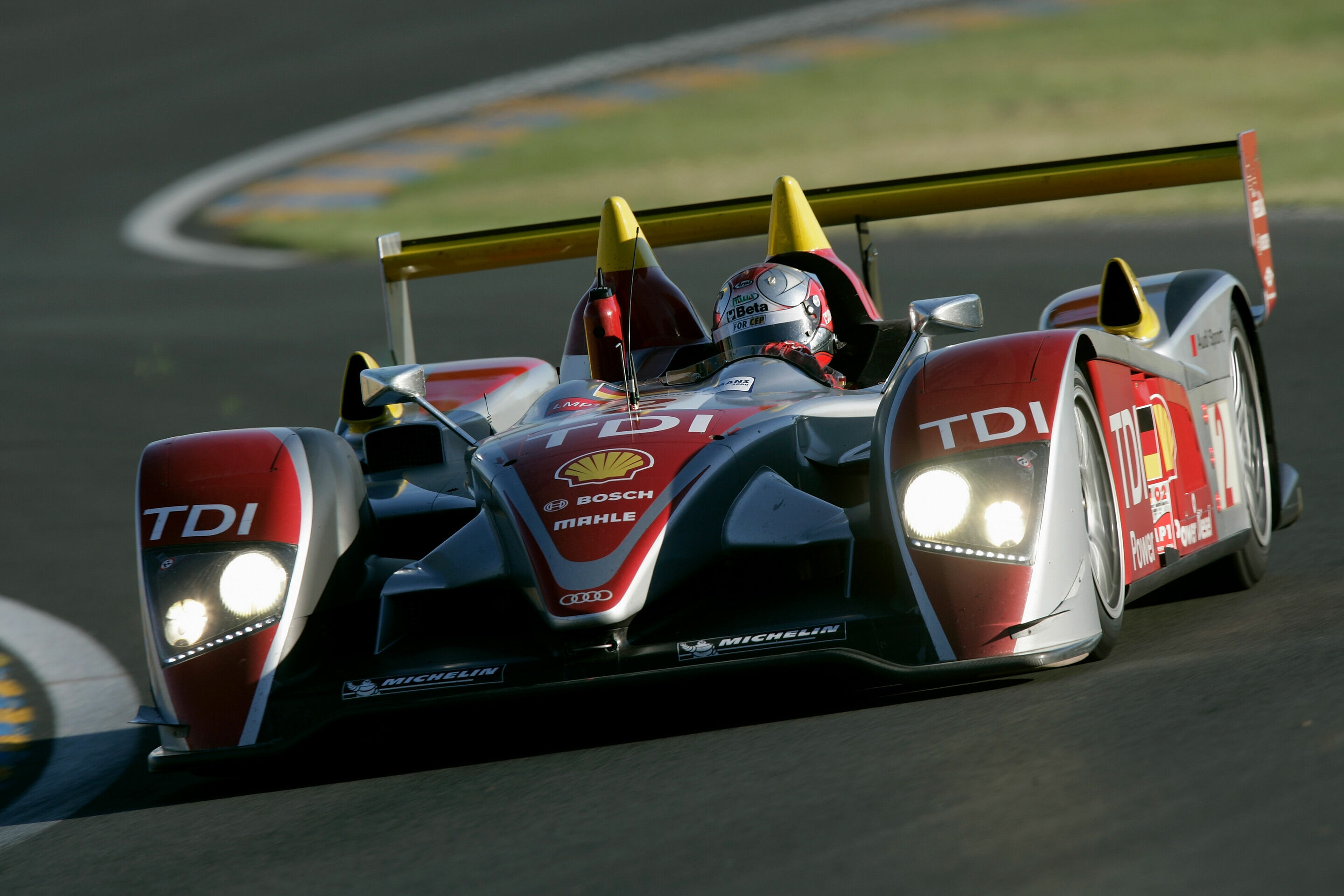 30th race for the Audi R10 TDI
30th race for the Audi R10 TDI
The Audi R10 TDI celebrates a small anniversary at Lime Rock: The revolutionary diesel sportscar, which just won the famous 24 Hours of Le Mans for a third time in succession, developed by AUDI AG contests its 30th race on the circuit located 110 miles northeast of New York City. The two cars fielded by Audi Sport North America were brought up to the latest technical specification during the break. A modified bodywork, which has already proven itself in the European based Le Mans Series, is part of the package. Through its American Le Mans Series programme, Audi prepares the diesel offensive on the US market. In the meantime, the low-sulphur content fuel required to run the TDI engines is now available nationwide. Audi launches the world’s cleanest diesel with an ultra-low emission system onto the USA market this year. It meets the world’s most stringent exhaust emission standard – the LEV-II Bin-5 norm, which is law in the US states of California and New York. The American Le Mans Series organisers continue to place greater emphasis on alternative fuels and the development of more economical and environmentally friendly engines. In 2008, the series cooperates for the first time with the U.S. Department of Energy and the U.S. Environmental Protection Agency, which has developed criteria for so-called “Green Racing” together with SAE International. The use of Bio fuels and various power concepts, energy recovery systems and the reduction of emissions are also included in the list of criteria. The American Le Mans Series is the first race series to fulfil these criteria and is therefore well ahead of other motorsport categories. Clean combustion, low consumption During the 2008 season, fuels containing a minimum 10 per cent of bio components (E10) are stipulated for spark ignition engines for the first time. As an option, E85 which consists of up to 85 per cent ethanol can even be used.
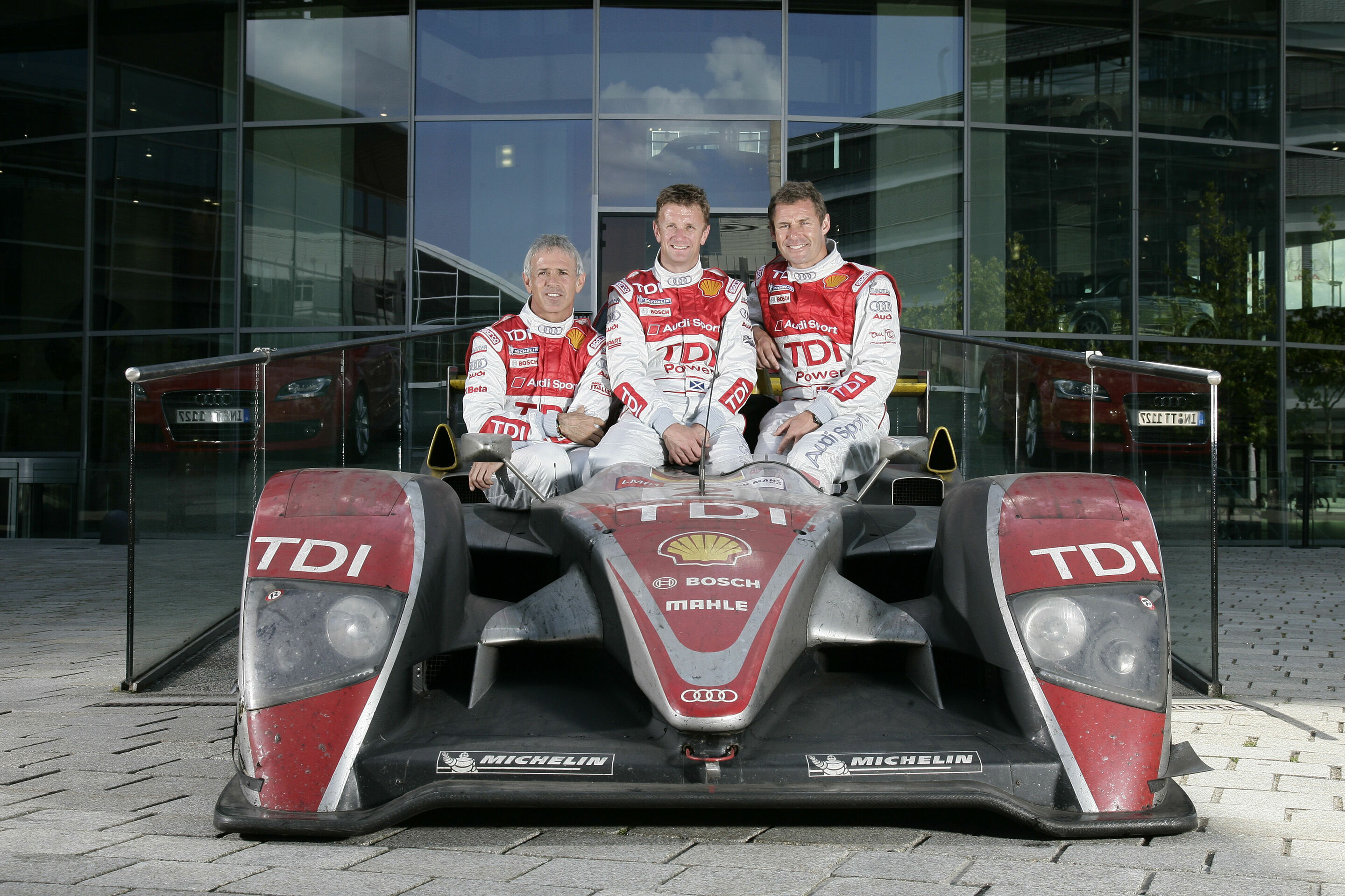 1,000 Audi mechanics spur on the DTM drivers
1,000 Audi mechanics spur on the DTM drivers
Le Mans winning Audi R10 TDI contests “World of Race Cars” Ironman Normann Stadler and German ski ladies visit DTM Audi factory drivers receive new RS 6 as company car
1,000 garage employees from the Western Region will turn the DTM race at the Nürburgring into a home race for Audi. But not only the grandstands will be filled with roaring enthusiasm for the seventh round of the season: the event will also feature loads of trackside action around DTM leader Timo Scheider and his team-mates.
On Sunday, spectators at the Nürburgring will see a grandstand completely in red: AUDI AG has invited some 1,000 mechanics from Audi partners to witness the DTM live. In addition to a hospitality area on the pit roof, a grandstand reserved only for them and an exclusive pit lane walk, Audi’s guests will of course come into close contact with their DTM stars as well. The reason for this invitation was to recognise the day-to-day work performed by service personnel in the garages and to provide motivation for the future. On Thursday the Audi factory drivers will be receiving their new “company cars” at the Nürburgring from quattro GmbH. Champion Mattias Ekström and his team-mates will then be driving 580-hp Audi RS 6 Avant cars – the most powerful production model ever bearing the badge of the four rings. Summit meeting of two genuine marathon men: Normann Stadler, two-time winner of the Ironman triathlon in Hawaii and an Audi driver, will visit the DTM squad and meet Tom Kristensen, who has triumphed as many as eight times at the 24-Hour motorsport marathon at Le Mans. In addition to swapping experiences, the two top-flight athletes have arranged to go on a cycle tour of the Nürburgring. For bicycle fan Tom Kristensen, this will not be a major change of pace: on his way to the Eifel he visited the Tour de France.
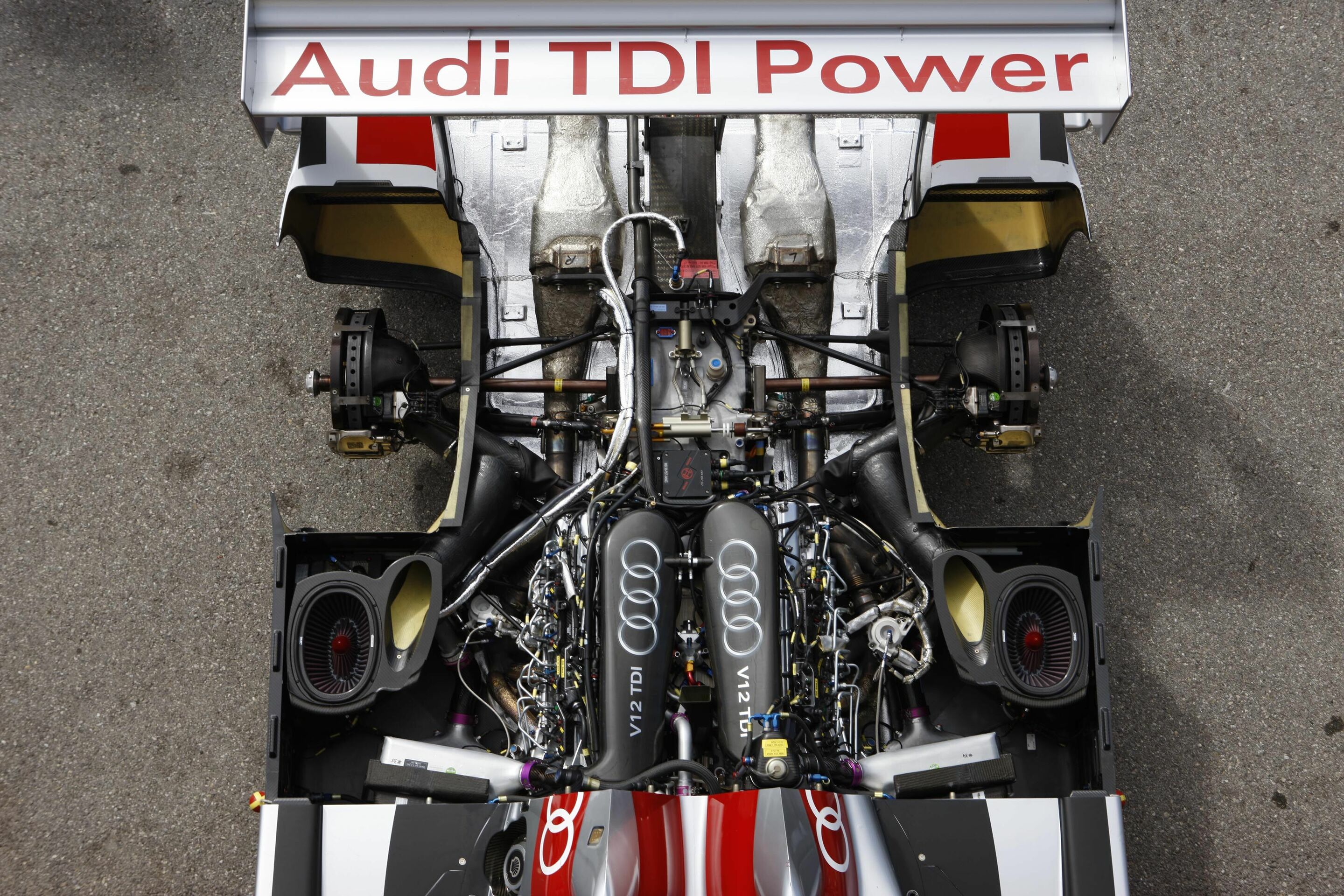 Audi R10 TDI races for first time in Germany
Audi R10 TDI races for first time in Germany
1000-kilometre race at the Nürburgring Germany debut for the diesel sportscar Test bench for innovative diesel-particulate filters
The Audi R10 TDI has won the famous 24 Hours of Le Mans three times in succession. For the first time the ground breaking diesel sportscar competes in the 1000-kilometre race at the Nürburgring on 17 August in the country where it was designed: Germany.
AUDI AG demonstrated entrepreneurial prowess yet again with the R10 TDI, particularly as many experts considered Ferdinand Piëch’s vision to win Le Mans with a diesel engine for utopian. “When we informed our suppliers about the diesel project they asked us whether we really wanted to take the step,” remembers Head of Audi Motorsport Dr Wolfgang Ullrich. “It was a big risk. We knew this, but if Audi couldn’t have managed this pioneering achievement who could have?” The inventor of the TDI reached its goal. Three victories at the 24 Hours of Le Mans and 14 overall race victories in the American Le Mans Series in the USA are an impressive record and proof of the leading role that Audi plays in the development of the TDI Technology, which is accelerated by the R10 TDI project. This is also valid for technical components like the innovative diesel particulate filters (DPF) with which the Le Mans sportscar is equipped. The filters supplied by Dow Automotive have been reduced in both size and weight by approximately 40% since their debut in March 2006. The efficiency of the filter was increased simultaneously. The diesel particulate filters used in the R10 TDI excel as a result of their light weight and compact design. They drastically reduce particle emissions and generate only limited back-pressure – a particularly important factor for diesel engines which directly affects the engine power and fuel consumption. Audi comes to the 1000-kilometre race at the Nürburgring as leader in the Manufacturers’ Championship in the European based Le Mans Series.
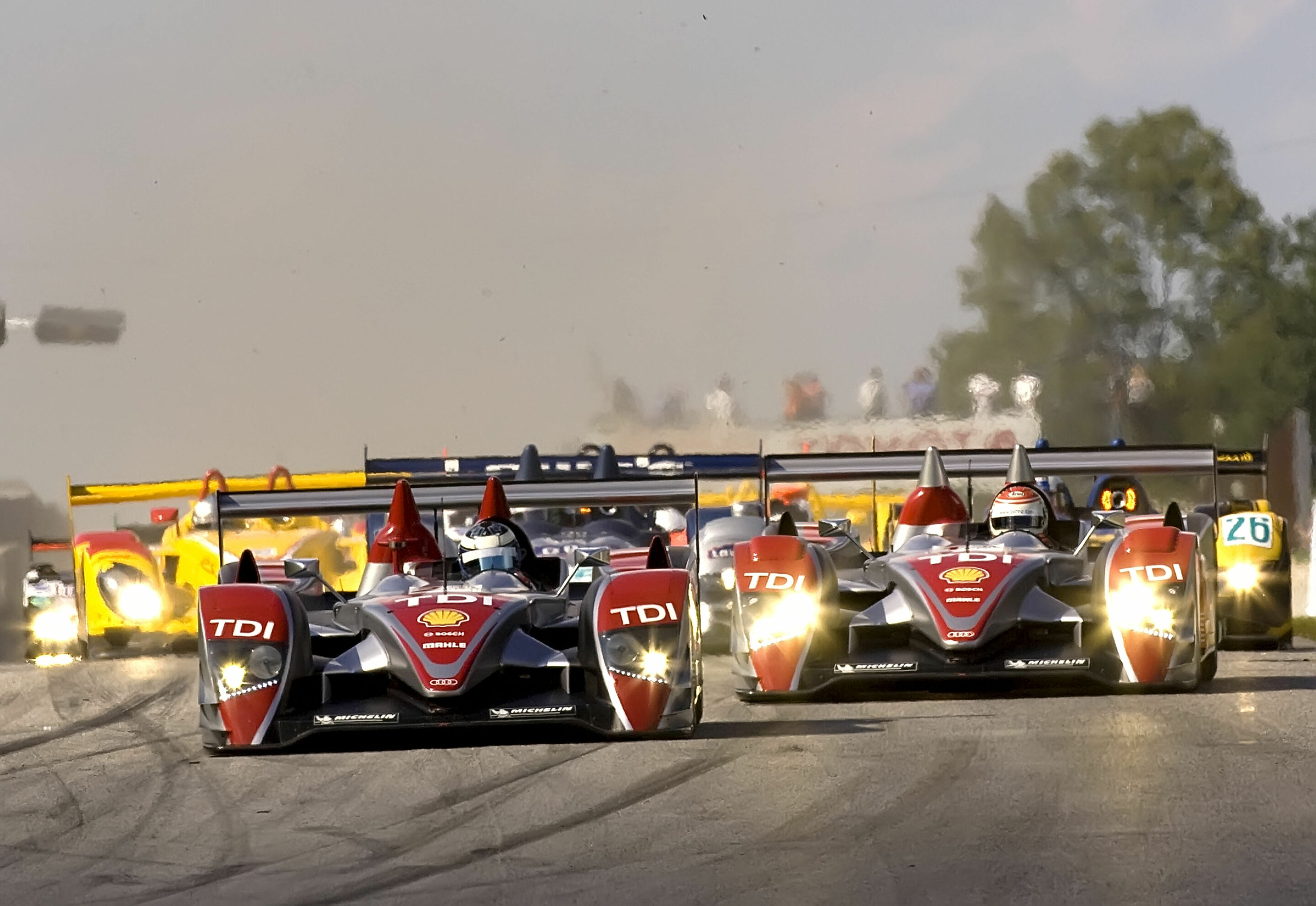 Audi R10 TDI with chance for double hat-trick
Audi R10 TDI with chance for double hat-trick
“Petit Le Mans” race at Road Atlanta (USA) Premiere of “Green Challenge” Audi TDI Technology for market launch in the USA
The Audi R10 TDI has already scored a hat-trick at the 24 Hours of Le Mans. On 4 October Audi now also targets the third consecutive victory with the 650 hp plus diesel-powered sportscar in the French long-distance classic’s “little brother”.
The 1000-mile race “Petit Le Mans” (“Little Le Mans”) has been held since 1998 at the race track Road Atlanta in Georgia, USA. It was the foundation for the American Le Mans Series established in 1999 and brings the Le Mans feeling year-in-year-out to the USA. Audi competed for the first time at Road Atlanta in 2000 and remains unbeaten in the “Petit Le Mans” event since then. Six Audi R8 wins were followed in the last two years by a brace of victories for the revolutionary R10 TDI, with which Audi prepared the diesel offensive in the USA. The world’s most successful Efficiency-Technology will be available on U.S. markets from 2009. In the meantime Audi has recorded 20 wins with the R10 TDI, 16 of them in the American Le Mans Series. “I was immediately impressed when I drove the car for the first time,” remembers Lucas Luhr, who won the Drivers’ Championship together with Marco Werner with two races still to run in the 2008 American Le Mans Series LM P1 class. “It’s absolutely fascinating just how the TDI engine pushes.” Dindo Capello and Allan McNish have the enormous torque of over 1,100 Newton metres to thank for their “Petit Le Mans” victory last year. Romain Dumas was able to squeeze past the Audi during the exciting closing stages of last year’s race. However, Capello repeatedly managed to overtake the lighter LM P2 Porsche thanks to the V12 TDI engine’s torque. “That was one of the most exciting races that I’ve ever competed in, and a perfect demonstration of the performance of Audi TDI Power,” enthuses the Italian who also drives a TDI at home.
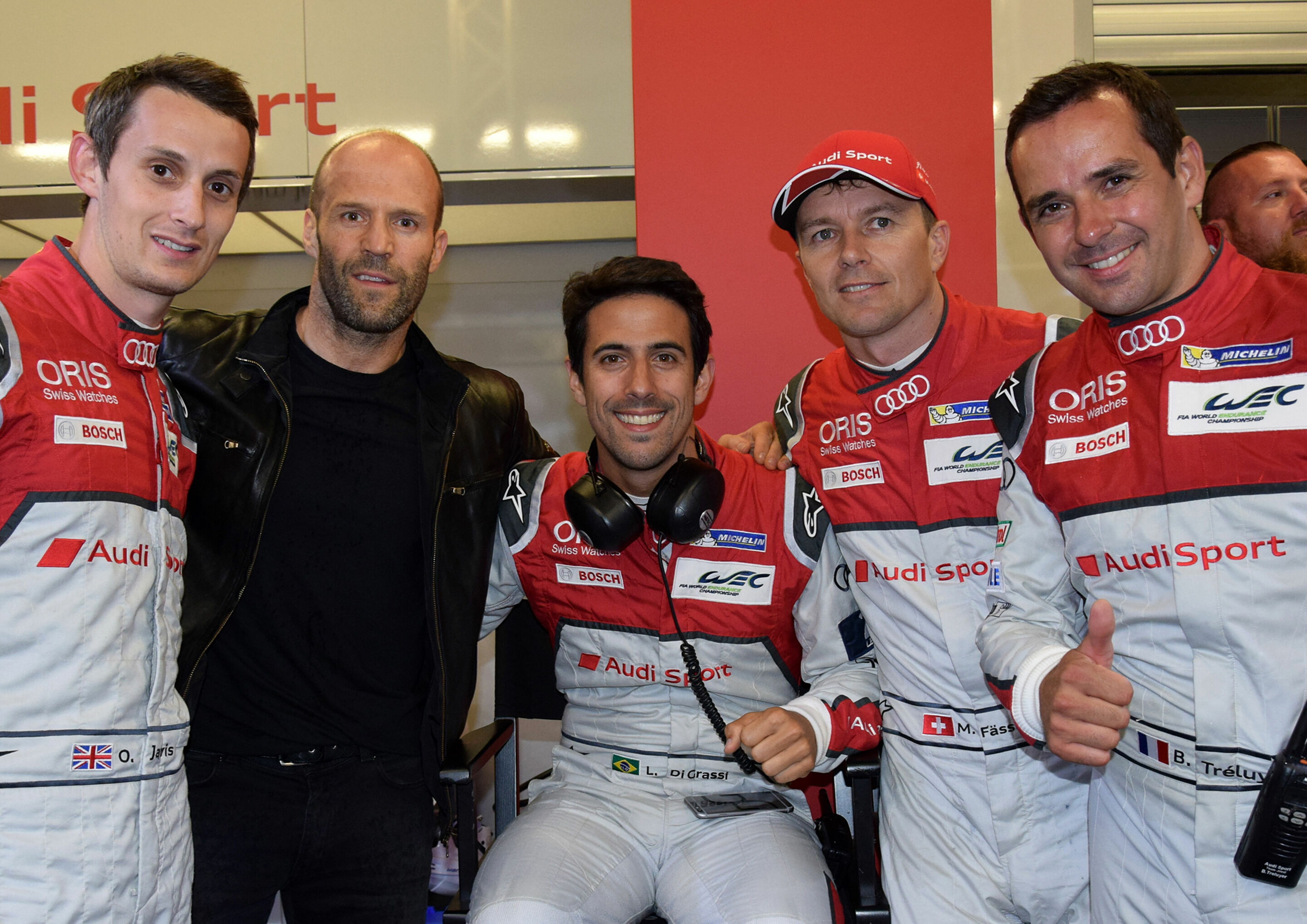 Hollywood stars visit Audi at Le Mans
Hollywood stars visit Audi at Le Mans
Mattias Ekström thrills guests in rallycross Audi In 2007, Mattias Ekström was driving an Audi R10 TDI on the test day at Le Mans. In 2008, he won the DTM race at Circuit Bugatti. Now the Swede returned to Le Mans with a new mission. During the 24-hour race he took guests for a ride in his near-600-hp Audi S1 EKS RX quattro from the FIA World Rallycross Championship. “Anyone who’s ever been a passenger in our S1 knows why our hashtag is #welovequattro,” says Ekström. Tom Kristensen expert at Eurosport A new experience for Tom Kristensen: The record winner of the Le Mans 24 Hours for the first time served as an expert to the television channel Eurosport in the pit lane at the classic French endurance race. Beyond this commitment “Tom K.,” as usual, had an extremely busy schedule at Le Mans again.
Strong appearance by the new Audi TT RS Besides the Audi R18, the new Audi TT RS caused a stir at Le Mans. Journalists were given an opportunity to personally try out the 400-hp flagship of the TT model range on the Le Mans race track. There were two other premieres: for the first time, a group of journalists was allowed to practice a pit stop on an Audi R18 and at the Audi Arena, guests together with Audi Sport assembled a V12 TDI engine of the Audi R10 TDI that was victorious in 2006, 2007 and 2008. Audi R8 becomes an internet star This year, Audi again provided the Official Cars during the Le Mans 24 Hours. The Audi R8 Safety Car unexpectedly became a principal performer on Thursday night. Four-time Le Mans winner Yannick Dalmas thrilled the fans during an interruption of the qualifying session in pouring rain with a spectacular drift. The short video has since been virally spreading on the internet and is perfect advertisement for the Audi R8’s quattro drive. More than 100,000 Twitter fans, new Audi Sport App During the Le Mans week Audi Sport logged more than 100,000 followers on Twitter (@audisport).
